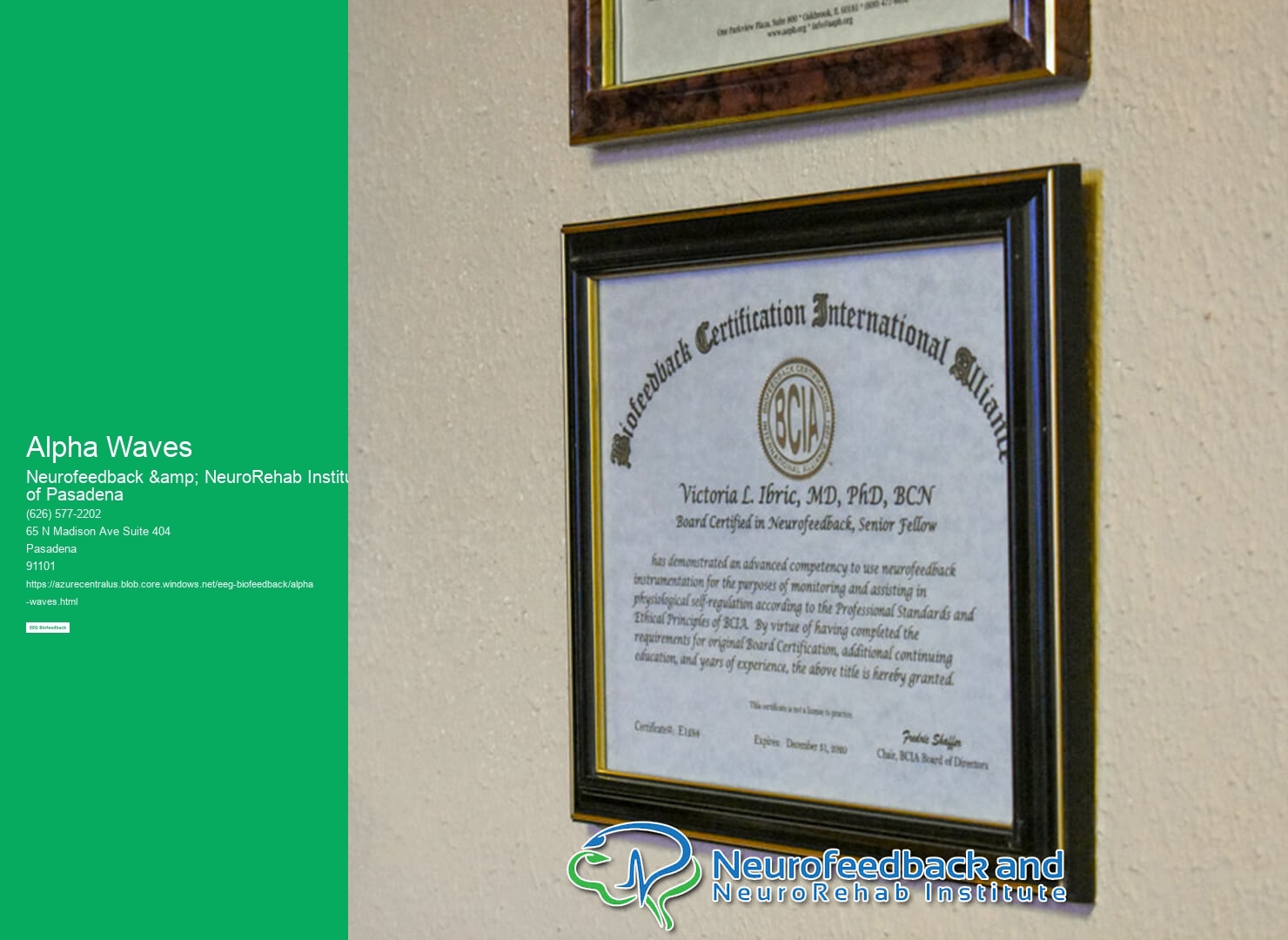

Alpha waves are a type of brain wave that occur in the frequency range of 8 to 12 Hz. They are one of several types of brain waves, including beta, theta, and delta waves. Alpha waves are typically present when a person is awake but in a relaxed state, such as during meditation or daydreaming. They are characterized by a smooth, regular pattern and are often associated with a state of calmness and relaxation. Unlike other brain waves, such as beta waves which are associated with alertness and focused attention, alpha waves are more commonly associated with a relaxed and reflective state of mind.
Alpha waves have been found to have a positive impact on our state of mind and overall well-being. When alpha waves are present, it is often an indication that the brain is in a state of relaxation and calmness. This can lead to reduced stress and anxiety, improved mood, and increased creativity. Alpha waves have also been associated with improved focus and attention, making it easier to concentrate on tasks. Additionally, alpha waves have been linked to enhanced learning and memory, suggesting that they play a role in cognitive functioning.
While alpha waves are typically generated spontaneously by the brain, research has shown that they can be consciously controlled or manipulated to some extent. Through practices such as meditation and biofeedback, individuals can learn to increase alpha wave activity in their brains. Biofeedback involves using electronic devices to monitor and provide feedback on brain wave activity, allowing individuals to learn how to consciously increase alpha waves. With practice, individuals can develop the ability to enter a relaxed and focused state by intentionally increasing alpha wave activity.

There are several activities and practices that can help increase alpha wave activity in the brain. Meditation is one of the most effective ways to promote alpha waves. By focusing on the breath or a specific object, individuals can enter a state of relaxation and increase alpha wave production. Other practices such as deep breathing exercises, progressive muscle relaxation, and listening to calming music can also help stimulate alpha waves. Engaging in activities that promote relaxation and reduce stress, such as yoga or spending time in nature, can also increase alpha wave activity.
Increasing alpha wave activity in the brain can have several potential benefits. As mentioned earlier, alpha waves are associated with relaxation and calmness, which can lead to reduced stress and anxiety. This can have a positive impact on overall well-being and mental health. Alpha waves have also been linked to improved focus and attention, making it easier to concentrate on tasks and improve productivity. Additionally, alpha waves have been associated with enhanced creativity and problem-solving abilities, suggesting that increasing alpha wave activity may boost cognitive functioning.


While alpha wave stimulation is generally considered safe, there are some potential risks and side effects to be aware of. Some individuals may experience drowsiness or fatigue when alpha waves are increased, especially if they are already in a relaxed state. It is important to find a balance and not overstimulate alpha waves, as this can lead to excessive relaxation and decreased alertness. Additionally, individuals with certain medical conditions, such as epilepsy or a history of seizures, should consult with a healthcare professional before attempting to manipulate their brain waves.
Alpha waves are closely related to meditation and mindfulness practices. When individuals enter a meditative state, alpha waves are often present in the brain. This is because meditation promotes relaxation and a focused state of mind, which is associated with increased alpha wave activity. Mindfulness practices, which involve paying attention to the present moment without judgment, also promote alpha waves. By cultivating a state of mindfulness, individuals can increase alpha wave production and experience the benefits associated with this brain wave activity. Many meditation and mindfulness techniques specifically aim to increase alpha wave activity as a means of promoting relaxation and mental well-being.

SMR-theta training is a form of EEG biofeedback that is utilized in a targeted manner to achieve specific therapeutic goals. This training involves the modulation of the sensorimotor rhythm (SMR) and theta brainwave frequencies through neurofeedback techniques. The SMR frequency range typically falls between 12-15 Hz, while the theta frequency range is around 4-8 Hz. By training individuals to increase SMR activity and decrease theta activity, clinicians aim to address various therapeutic goals such as improving attention and focus, reducing anxiety and stress, enhancing cognitive performance, and promoting relaxation. This training is often tailored to the specific needs of the individual, taking into account their unique brainwave patterns and therapeutic objectives. Through the use of specialized EEG equipment and real-time feedback, individuals are able to learn self-regulation techniques and gradually achieve desired changes in their brainwave activity.
Heart rate variability (HRV) and EEG biofeedback are two distinct but interconnected aspects of biofeedback therapy. HRV refers to the variation in time intervals between consecutive heartbeats, which is regulated by the autonomic nervous system. EEG biofeedback, on the other hand, involves the measurement and training of brainwave activity using electroencephalography. While HRV primarily focuses on the cardiovascular system, EEG biofeedback targets the central nervous system. However, there is a significant relationship between the two. Research has shown that HRV can be influenced by changes in brainwave patterns, and vice versa. By using EEG biofeedback to train specific brainwave frequencies, individuals can potentially improve their HRV and overall autonomic nervous system function. This integrated approach allows for a more comprehensive understanding and treatment of various physiological and psychological conditions.
Yes, EEG biofeedback can be used in conjunction with other therapeutic interventions. EEG biofeedback, also known as neurofeedback, is a non-invasive technique that measures brainwave activity and provides real-time feedback to individuals. It has been found to be effective in treating a variety of conditions, such as attention deficit hyperactivity disorder (ADHD), anxiety, depression, and post-traumatic stress disorder (PTSD). When used in conjunction with other therapeutic interventions, such as cognitive-behavioral therapy (CBT) or medication, EEG biofeedback can enhance the effectiveness of treatment. By providing individuals with information about their brainwave patterns and teaching them how to regulate their brain activity, EEG biofeedback can help individuals gain better control over their symptoms and improve their overall well-being.
Yes, EEG biofeedback can be used as a therapeutic approach to address symptoms of post-traumatic stress disorder (PTSD). EEG biofeedback, also known as neurofeedback, is a non-invasive technique that involves monitoring and training brainwave activity. By providing real-time feedback on brainwave patterns, individuals with PTSD can learn to regulate their brain activity and reduce symptoms such as anxiety, hyperarousal, and intrusive thoughts. EEG biofeedback can help individuals with PTSD gain better control over their physiological responses and improve their overall well-being. Additionally, this approach can be used in conjunction with other therapeutic interventions to enhance the effectiveness of treatment for PTSD.
Biofeedback neurostimulation and traditional EEG biofeedback are both forms of biofeedback therapy that aim to improve brain function and promote overall well-being. However, there are some key differences between the two approaches. Biofeedback neurostimulation involves the use of electrical stimulation to directly modulate brain activity and promote desired changes in brain function. This can be achieved through techniques such as transcranial direct current stimulation (tDCS) or transcranial magnetic stimulation (TMS). In contrast, traditional EEG biofeedback, also known as neurofeedback, focuses on training individuals to self-regulate their brain activity by providing real-time feedback on their brainwave patterns. This is typically done by placing electrodes on the scalp to measure brainwave activity and providing auditory or visual feedback based on specific brainwave frequencies. While both approaches have been shown to be effective in treating various conditions, biofeedback neurostimulation offers a more direct and targeted approach to modulating brain function, while traditional EEG biofeedback focuses on training individuals to self-regulate their brain activity.